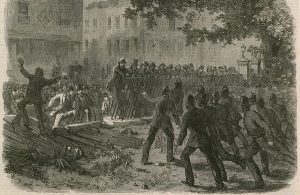Forget the satin ribbons and ballrooms for a moment. Jane Austen’s six completed novels are really laboratories where she tests how people think, love, lie, and do the right thing when it costs them. She sets her characters inside tight social rooms—parishes, parlors, pump rooms—and then turns the screws of money, inheritance, reputation, and desire. The result is fiction that sparkles and stings at once: witty on the surface, steely underneath. Read together, these books map the whole terrain of young adulthood—romance, reason, shame, pride, persuasion—and show how a mind (especially a woman’s) can remain honest in a world that rewards performance.
What follows isn’t a dry syllabus. It’s a guided walk through the six novels, grouped by the kinds of moral puzzles they stage and the kinds of readers they best reward.
Sense vs. Sensibility, Pride vs. Prejudice
Sense and Sensibility (1811) opens the set like a chamber piece where every instrument is money. When Mr. Dashwood dies, entailment tosses his widow and daughters out of Norland Park and into a rented cottage, turning private grief into public humiliation. The sisters respond in opposite keys: Elinor practices restraint and careful judgment; Marianne trusts her heart and expects the world to meet it halfway. Austen doesn’t punish feeling—she simply refuses to let it rule. Edward’s evasions bruise Elinor; Willoughby’s vanity nearly destroys Marianne. Around them echo cautionary tales—a seduced Eliza here, a compromised reputation there—until “protect your heart” stops sounding prudish and starts sounding like survival. The novel’s quiet revolution is its defense of steadiness. Not coldness, not cynicism—steadiness. Pain acknowledged, dignity kept, future preserved.
Pride and Prejudice (1813) widens the stage and sharpens the satire. Elizabeth Bennet’s wit dazzles, but it also misleads; Darcy’s reserve reads like arrogance; Wickham’s polish conceals rot. Austen’s joke is that almost everyone is wrong at first glance—including us. Entailment hums in the background again, turning the Bennet home into borrowed time and Mr. Collins’s obsequious visits into dread. The book’s moral isn’t “marry rich.” It’s “see clearly.” Collins’s performative virtue and Lady Catherine’s bluster melt beside Darcy’s quiet acts—most of which he never intends anyone to know about. Lydia’s elopement shows what happens when appetite outruns instruction; Lizzy’s transformation shows what happens when pride learns humility without losing fire. Reread the proposal scenes and you’ll notice: romance blooms not from grand speeches but from revised judgments.
Start here if… you want the blueprint for every “serious rom-com” written since. These two early novels dramatize the hardest internal work of adulthood: regulating feeling without silencing it, updating your opinion when new facts arrive, and distinguishing charm from character.
Emma and Mansfield Park
Emma (1815) is Austen’s sunniest book with her darkest joke: self-deception can flourish in a happy home. Emma Woodhouse is rich, loved, clever—and wrong about almost everything. She treats people like plots: Harriet as a project, Mr. Elton as a prop, Jane Fairfax as a rival she’d rather not study too closely. The novel’s comedy comes from mismatched assumptions; its ethics come from consequences. Harriet’s heart is not scrap material for someone else’s education. Jane’s reserve is its own form of strength. And Mr. Knightley’s criticism—so unfashionable, so precise—turns out to be the only love Emma can grow from. By the end, “bad manners” means something larger than rudeness; it means a failure to recognize the reality of other people’s lives. Emma’s change of heart isn’t a heel turn—it’s the slow unlearning of class-fed fantasy.
Mansfield Park (1814) looks, at first, like the opposite: a quiet novel about a quiet girl, Fanny Price, sent from a crowded Portsmouth home to the great house of her wealthy relatives. But its quiet is thunder. Everyone at Mansfield wants something they shouldn’t, or at least wants it for the wrong reason. A flirtation becomes a scandal; a private theatricals becomes a mirror; a clergyman’s calling becomes a career plan. Fanny’s refusal to join the game reads, to some, as prim. Look again. She is not against pleasure; she is against contempt. The novel’s shadow stretches beyond Northamptonshire: colonial wealth and the silence around enslaved labor haunt the Bertrams’ ease. When Sir Thomas returns from Antigua, the house seems to inhale; readers today can’t help but ask what funded all this comfort. Fanny’s attic exile, her refusal to be dazzled by Henry Crawford, and her slow recognition by Edmund compose a story about moral independence—a strength that can look like passivity until the party ends and the bill is due.
Read these when… you’re ready to see how class and charisma distort judgment—and how kindness, attentiveness, and humility can reset the room.
Northanger Abbey
Northanger Abbey (1817) is Austen’s wink at the gothic craze and a serious lesson dressed as a joke. Catherine Morland, sensible and unschooled, arrives in Bath and then at the Abbey full of borrowed melodrama. She imagines dark secrets in old chests and tragic histories behind locked doors. Austen obliges just enough to make the satire fun, then flips the script: the real dangers aren’t spectral; they’re social. Money misread as virtue. Status confused for character. Parents who treat young people like investments. Catherine’s brother James is jilted when his fiancée calculates the income shortfall. Catherine herself is welcomed, then thrown out, when her supposed fortune evaporates under rumor. Horror, Austen suggests, isn’t a bloodstain on a panel; it’s the coldness that descends when a family thinks your dowry won’t do. Henry Tilney’s clear head and kinder heart anchor the plot, but Catherine earns her ending by switching books—from gothic romances to the reliable volume of experience.
Pick this up if… you enjoy watching a genre lovingly teased—and want a primer on how easily money scripts behavior while we pretend it’s love.
Persuasion’s Second Chances
Persuasion (1817) is the postscript that reads like a confession. Anne Elliot once let herself be steered away from Captain Wentworth; when they meet again years later, the silence between them is heavy with everything not said. This is Austen’s most autumnal work: a novel about women whose bloom, society tells them, has passed; about men making rank in a navy that promotes talent over pedigree; about the fatigue of being constantly judged by surfaces. Mr. Elliot and Sir Walter polish theirs to a blinding shine. Anne—observant, gentle, firm—learns the difference between prudence and timidity, between being persuaded and being overruled. Louisa Musgrove’s fall at Lyme isn’t just spectacle; it’s an emblem of what happens when “never be persuaded” is mistaken for character. In the novel’s most famous scene, a letter slides across a table and changes two lives. It’s not a grand speech, just a hand finally telling the truth. That’s Persuasion’s ethic in miniature: choose integrity over performance, even if it takes you longer to speak.
Save this for when… you want a quieter, deeper ache—proof that romance can be a matter of timing as much as temperament, and that second chances often require first principles.
How to Read Austen Now
Read her for the banter, yes; stay for the x-rays of motive. Across the six:
- Money is plot. Entailments shove heroines into smaller rooms; incomes pace proposals; fortunes misreported rearrange entire families. Austen never tires of showing how cash dresses up as virtue—and how virtue often looks modest because it doesn’t advertise itself.
- Judgment is the journey. Elinor learns to feel without drowning; Marianne learns to feel without demanding the world excuse it. Lizzy learns not to worship her first impression. Emma learns to listen. Fanny learns that saying “no” is also an action. Catherine learns to swap fantasy for perception. Anne learns to trust her own good sense.
- Charm is suspect; constancy rarely is. Wickham and Willoughby dazzle; they also devastate. Darcy and Knightley fumble conversations and then do the right thing offstage. Wentworth is stung and stubborn and still writes the letter. Edward falls short and then stands up. Austen scatters wolves in borrowed wool through every neighborhood; she answers them not with cynicism but with clear-eyed kindness.
- The novels talk to each other. Read Sense and Sensibility beside Persuasion to watch Austen refine the balance between feeling and reason. Pair Emma with Mansfield Park to see privilege interrogated from above and below. Set Pride and Prejudice next to Northanger Abbey to compare two kinds of misreading—pride’s and fantasy’s—and the different work needed to correct each.
And always, under the polished sentences, you’ll find a harsher truth: polite society can be cruel. It can exile a girl for lacking a fortune, flatter a fool because he has one, praise a rake because he performs virtue well. Austen doesn’t fix that with wishful thinking; she fixes it by rewarding characters who learn to discern. Her happy endings are not decorative bows; they’re ethical outcomes. The people who get the good marriages have done the hard work of becoming good mates.
Where to Begin (and Why)
- New to Austen? Start with Pride and Prejudice for the dazzle, then Sense and Sensibility for the blueprint of reason vs. feeling.
- Craving character growth? Emma for self-education with jokes; Persuasion for self-respect with longing.
- In a mood for shadow? Mansfield Park for moral weather and the uncomfortable economics behind comfort.
- Want a meta-wink? Northanger Abbey for satire that teaches you how to read the rest.
Austen finished only six novels, but they contain whole lifetimes: the sting of being underestimated, the shame of being wrong, the relief of being forgiven, the risk of loving first, the bravery of loving again. If romance is her vehicle, ethics is her engine. Two centuries on, she’s still challenging us to steer with both hands—heart in one, judgment in the other—and to notice, as her best characters finally do, that happiness is a matter of character before it’s a matter of chance.











































